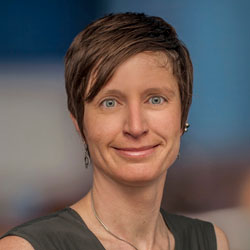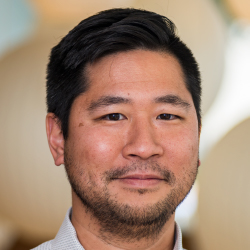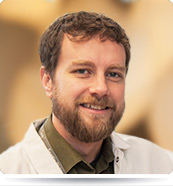Beyond Cures: Optimizing CAR T Cell Therapy for Cognitive Safety
Published
Featured Researchers
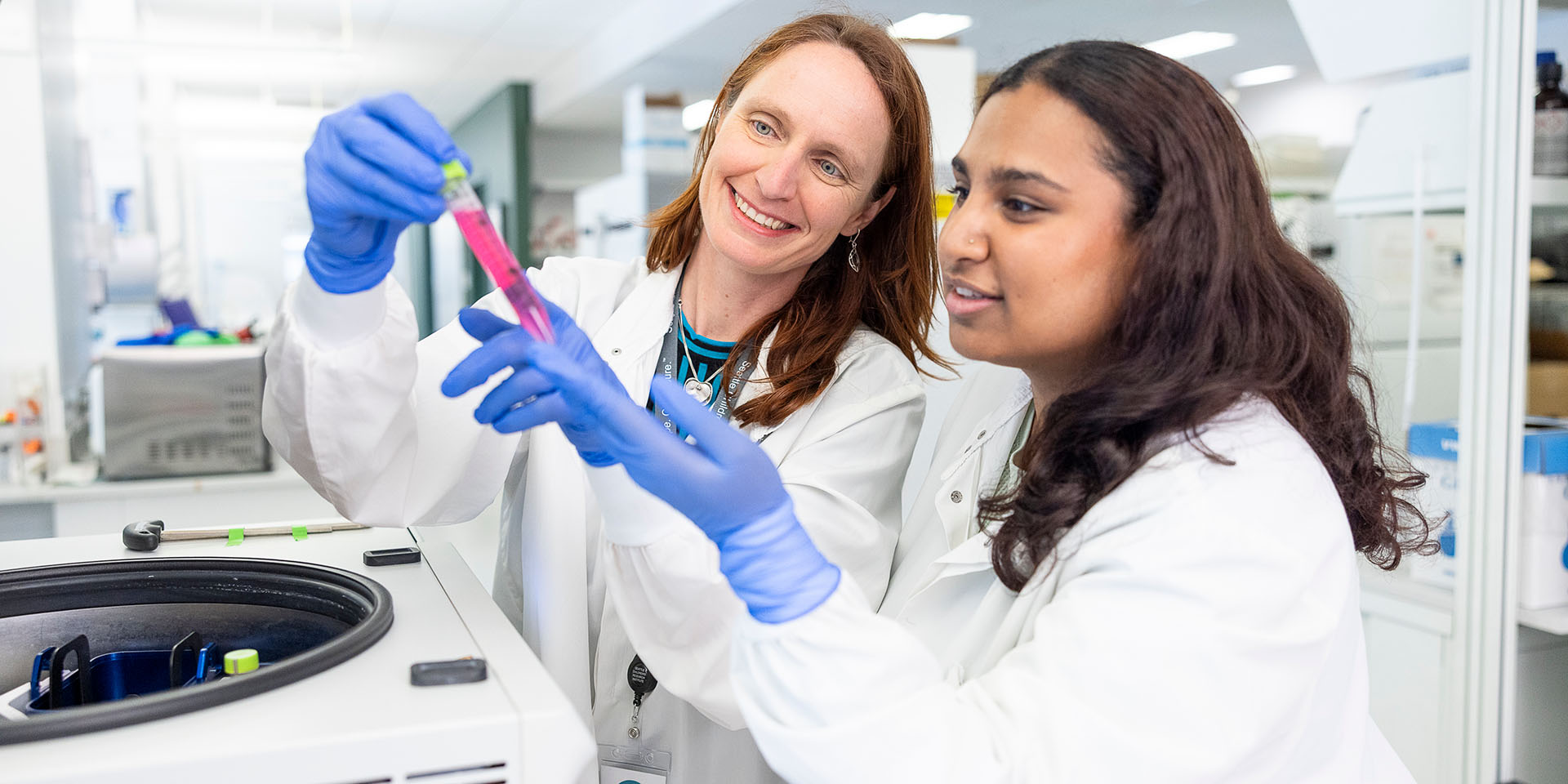
Article Summary
Dr. Juliane Gust, MD, PhD, is a leading physician-scientist at Seattle Children’s who was among the first to publish on CAR T cell neurotoxicity, advancing translational research at the intersection of neurology, oncology, and immunology to improve both survival and long-term cognitive outcomes in pediatric cancer patients.
Curing cancer is a worthy and lofty goal but for Seattle Children’s Juliane Gust, MD, PhD, it’s not enough. The neurologist and her team were among the first to publish the neurocognitive side effects of immunotherapies, and she continues to lead foundational research and bold collaborations, shifting the focus from survival alone to survival without cognitive compromise.
In 2017, Dr. Gust started her lab in Seattle Children’s Research Institute’s Norcliffe Foundation Center for Integrative Brain Research, determined that Children’s global leadership in emerging immunotherapies like pediatric CAR T cell treatments should be matched by research into how to deliver this therapy as safely as possible to young, developing brains.
Understanding CAR T Cell Therapy
Chimeric antigen receptor T (CAR T) cell therapy is a promising treatment that uses the body’s own immune system to help fight tumors and blood cancers. Immune cells called T cells are taken from the patient’s blood and engineered in the lab to have receptors (CARs) added on their surfaces to recognize and destroy cancer cells.
Children’s offers investigational CAR T cell clinical trials for more types of childhood cancers, including leukemia, lymphoma, brain and spinal cord tumors, and solid tumors, than anywhere else in the world.
My passion, while we are working to cure patients, is to also give them the best neurocognitive outcomes. As we are getting better at cures, we want to intensely focus on preserving children’s quality of life and their potential.
One Foot in the Clinic, One in the Lab
As a physician-scientist, Dr. Gust keeps one foot firmly planted at the bedside, where she’s eager to help young patients survive cancer treatment with healthy brains, and one foot in her lab, where an ambitious team of 10 works to unlock the brain’s secrets at the intersection of neurology, oncology and immunology.
Her solution to limitless questions and finite capacity is never less curiosity. Instead, Dr. Gust tirelessly pulls together diverse experts to collaborate and tackle thorny problems in cancer care.
Dr. Gust recently caught us up on the latest in her translational research:
What is the basic question your neurology research is trying to answer?
How do the systemic challenges of inflammation and cancer affect the healthy developing brain? More specifically, how do the vasculature [the body’s network of blood vessels] and the immune system interact with the brain in creating these challenges, and how do we harness them to treat disease?
How did you come to study the intersection of neurology and oncology?
The first CAR T cell trials started to open 2012 and as a neurologist, I was getting calls for neurologic toxicity consults in patients. I asked, “Where are the papers we can read to help us figure out what's going on with these patients?” And people told me, “There are no papers because we don't know what this is.” I was like, “Wow! I have found my very interesting entry into this field.” I'm a neuro-onco immunologist, which is a field that didn't exist 20 years ago.
Nice that a path appeared before you!
Exactly. But it appeared when I was looking intensely, ready to throw myself at something that really piqued my interest. I worked with the oncologists who were running the clinical trials to see what kind of project I could get going. Luck hits the prepared! Now I'm integrated in that ecosystem of oncology and the intersection with the brain, and I've built a lot of collaborations nationally and internationally in the field. For instance, I work with a consortium of pediatric oncologists who are studying how to use CAR T cells in leukemia that involves the central nervous system.
Pioneering the Field of CAR T Cell Neurotoxicity
So, there were once no research papers about CAR T cell neurotoxicity. Did you change that?
Yes, we’ve authored groundbreaking, influential findings. The first couple of papers we wrote are still highly cited.
Our 2017 study in Journal of Clinical Oncology was one of the first foundational descriptions of CAR T neurotoxicity in adults. In 2019, we followed with a seminal paper in Blood focused on pediatric patients — both remain highly cited in the field.
We have a paper publishing soon in the journal Neurology. I’m very proud of this study — a collaboration with multiple institutions across the U.S. — because it will provide an authoritative picture of what we can see on brain imaging when CAR T cells cause neurotoxicity.
There are more papers published on this topic now, but there's still more to be explored about what's going on with neurotoxicity. We're just beginning to scratch the surface in understanding the pathophysiology.
Why is it important to understand how CAR T cells traffic in the brain and what’s going on in the immune system at a fundamental level?
My passion, while we are working to cure patients, is to also give them the best neurocognitive outcomes. As we are getting better at cures, we want to intensely focus on preserving children’s quality of life and their potential. Parents want their kids to survive and that is, by far, our most important goal. With success, we are starting to have the luxury of thinking about how to keep them as healthy as possible as we are trying to cure them.
Immunotherapies have the potential to have lower toxicity if we can figure out how to harness them in a functional way. I want to get into the brains of the immune cells and understand what they are programmed to do and co-opt that into retargeting to do what we want them to do. We're very successful in doing that with leukemia. But in brain tumors, it's been much more difficult because we still don't quite understand how we can get them to do what we want.
Building Safer Treatments and Better Outcomes
What neurocognitive outcomes from cancer treatment do you hope to improve? What research studies are you conducting?
CAR T cell therapy for leukemia often is accompanied by neurologic toxicity in the form of acute brain dysfunction where kids won’t be able to talk or meaningfully interact for a few days. Most recover without lasting harm, but we don’t know that for sure. We have a study open now to measure the long-term outcomes of our patients’ neurocognitive performance.
We occasionally see events where patients receiving CART T cell therapy get very sick, land in the ICU, have seizures and very rarely, die. We still don't understand why some patients’ immune systems overreact so much.
I dream my work will help us, in real time, more effectively measure in patients how therapies are affecting the brain. That's why we're doing a biomarker study to allow us to integrate simple and validated measurements of neurologic injury into future clinical trials of chemotherapy and radiation regimens in a wide variety of pediatric cancers. We want to adjust our therapies if we see a particular patient is more sensitive to a certain drug and it's more toxic to their brain. I hope we can be smarter about protecting patients’ brains.
I would also love to make immunotherapy safer and more efficient so we can use it in more cases to spare the effects of chemotherapy and radiation.
Bringing Clinical Experience Into the Lab
How does being a physician inform your neurology research?
For my outpatient clinic, I'm part of Children’s Brain Tumor Program. I also work with Children’s Neurosciences Center and as attending neurologist on the inpatient service. But my clinical work is mostly focused on the neurologic aspects of cancer care. Because I have a relatively small clinical footprint, it allows me to focus my energies on the patients that I'm also interested in researching. It gives me a lot of inspiration to understand where the patients and families are coming from and what questions they have — and I love it when they ask me about my research!
Are we still unraveling how CAR T cell therapy works?
There is a lot of work being done to develop new CAR T cell therapies. But I don't see too many people thinking about what T cells naturally do and how to harness that for solid tumor treatment. That's where the opportunity lies for us to investigate that in the lab, to watch fluorescently labeled cells interact in real time in our models to better understand the biologic processes.
This research will ultimately help our patients, but we're not going to get something meaningful if we don't have the fundamental understanding. That's why I have no problem being patient and figuring out more basic mechanisms; if I don't even know what I'm trying to fix, it's very easy to waste a lot of effort.
How does your neurological research exemplify Team Science?
Children’s is an incredibly collaborative and uniquely collegial place. I work with researchers in different scientific centers across the research institute and with collaborators at the University of Washington and elsewhere.
A few examples:
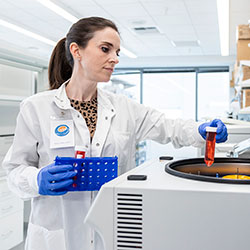
I also collaborate with Siobhan Pattwell, PhD [principal investigator in the research institute’s Ben Towne Center for Childhood Cancer and Blood Disorders Research], on a brain tumor project. We study brain tumors in a preclinical model with an intact immune system. In my mind, this is incredibly useful for studying how to target CAR T cells toward tumors in patients with normal immune systems since we know the immune system can both protect and attack the tumor. We want to better understand that balance.
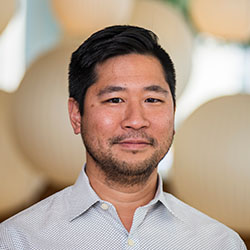
My main mentor is Andy Shih, PhD [principal investigator in the research institute’s Center for Developmental Biology and Regenerative Medicine], who taught me how to do brain imaging to look at cellular interactions in real time. I've been adapting these techniques to look at the immune system and tumors in the brain.
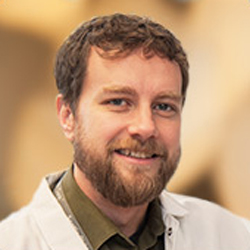
I also work with Stephen Smith, PhD [principal investigator in the Norcliffe Foundation Center for Integrative Brain Research], who studies protein interactions, especially in CARs. We're looking at how we can design CARs with more efficacy and less toxicity, testing them in preclinical models so we can understand them before using them in people.
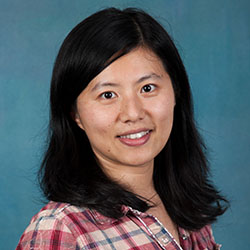
I have a grant with Ying Zheng, PhD, a bioengineer at the University of Washington who creates models of human brain micro vessels. We have these models interact with CAR T cells and we're seeing some very promising results.
I pull together experts in different systems and technical expertise because you need people who are masters in their particular fields to answer questions with integrity and push science forward. The collective brainpower of these smart people amplifies our impact.
While I have a lot of collaborators, my unique niche is this exact intersection in basic science using preclinical and neurovascular models. I love doing something that nobody else is doing. I find it such a great privilege and so interesting to ask questions that haven't been asked before. Combining different fields and different ways of thinking is a challenge but also a powerful opportunity for new discoveries.
Shaping the Future of CAR T Cell Therapy
With clinical insights and scientific rigor, Dr. Gust isn’t just advancing CAR T cell therapy — she’s shaping its future. In a field that once had no papers and few answers, Dr. Gust is writing the playbook, one discovery at a time.
— Colleen Steelquist

